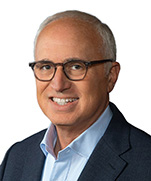Popular Ridesharing Company CEO on the Future of Self-Driving Taxis
The popular ridesharing company’s CEO, Dara Khosrowshahi, recently shared insights on the future of autonomous vehicles and the company’s position within the evolving industry. While the popular ridesharing company continues to explore self-driving taxi services, Khosrowshahi acknowledged that widespread adoption remains far off.
In a recent interview, he explained that the challenges in fully autonomous ride-hailing services go beyond technological advancements. Safety concerns, regulatory compliance, fleet maintenance, and high operational costs are all significant hurdles. Despite these challenges, the popular ridesharing company has been working alongside Waymo in Phoenix and plans to expand partnerships into cities like Atlanta and Austin.
However, Khosrowshahi remains realistic, stating that it will take much longer before autonomous vehicles can fully replace human-driven popular ridesharing company rides. Even though self-driving technology has made significant progress in controlled environments, scaling it to unpredictable, real-world scenarios across diverse cities remains a complex and costly endeavor.
🚦 Read more: Fortune
Waymo’s Mardi Gras Pilot in New Orleans
Waymo, Alphabet’s autonomous vehicle division, is preparing for an ambitious test in one of the most challenging environments for self-driving technology—Mardi Gras in New Orleans. With millions of attendees flooding the city’s streets, this event presents a unique opportunity to assess the performance of driverless cars in highly dynamic, crowded conditions.
The company has emphasized that the primary goal of this initiative is to gather data on how autonomous vehicles can safely navigate unpredictable pedestrian behavior, congestion, and temporary road changes. Mardi Gras represents an extreme test case, with high foot traffic, complex intersections, and a need for rapid decision-making from self-driving algorithms.
While Waymo has already been testing in more predictable urban settings such as Phoenix and San Francisco, New Orleans’ carnival season presents new challenges. The success of this pilot could influence how autonomous ride-hailing services expand into more densely populated and event-heavy cities in the future.
🚦 Read more: Biz New Orleans
Bridging the Gap: Improving AV Safety for Blind Pedestrians
As autonomous vehicle technology continues to develop, a growing concern has been its ability to interact safely with pedestrians, particularly those with disabilities. In collaboration with Boston University, a research team at the University of Maryland has been working to address this issue by developing new safety measures aimed explicitly at blind pedestrians.
Their project, known as “BlindWays,” seeks to enhance autonomous vehicles’ ability to predict the movements of blind pedestrians by incorporating real-world data into AV navigation systems. The team has collected detailed 3D motion-capture data, tracking how visually impaired individuals move through urban spaces. This data is crucial in training self-driving cars to anticipate pedestrian behavior better and prevent accidents.
Current autonomous systems are primarily trained on data that reflects the movements of sighted pedestrians, and the gap in understanding non-standard movement patterns poses a major safety risk. The researchers hope that by integrating this new dataset, self-driving vehicles will become safer and more inclusive for all road users.
🚦 Read more: University of Maryland
The Push for a Federal Autonomous Vehicle Framework
The regulatory landscape for autonomous vehicles in the US remains fragmented, with individual states implementing different laws, testing standards, and operational requirements. This lack of a unified approach has created barriers for AV companies looking to expand across state lines.
Former Department of Transportation (DOT) Inspector General Eric Soskin has called for a comprehensive federal framework to streamline regulations, arguing that the current state‑by‑state approach creates unnecessary complications and slows industry growth.
The Trump administration has expressed interest in establishing a national regulatory framework that would standardize safety measures, liability insurance requirements, and operational guidelines. Industry leaders believe that such a framework would provide much-needed clarity and help accelerate the adoption of self-driving technology.
However, debates continue over data privacy, cybersecurity, and accident liability. While a federal framework could create consistency, it must address concerns from industry stakeholders and policymakers to gain widespread support.
🚦 Read more: Business Insider
The Decline in California’s Autonomous Vehicle Testing
California has long been considered a hub for autonomous vehicle testing, but new reports indicate that testing in the state has declined by 50% over the past year. In 2024, self-driving cars covered approximately 4.5 million test miles in California—down significantly from the previous year.
Industry experts point to several reasons for this decline. First, economic challenges have forced many AV companies to scale back real-world testing and shift towards lower-cost virtual simulations. Additionally, companies such as Texas and Arizona are increasingly prioritizing states with more lenient regulations and lower testing fees.
Another key factor is the increased scrutiny from regulators following high-profile accidents involving autonomous vehicles. Companies are now facing more significant pressure to prove the safety and reliability of their technology before expanding testing operations.
While California remains an essential center for AV innovation, this sharp drop in testing miles highlights a shifting landscape as companies reevaluate where and how they develop their self‑driving technologies.
🚦 Read more: TechCrunch



